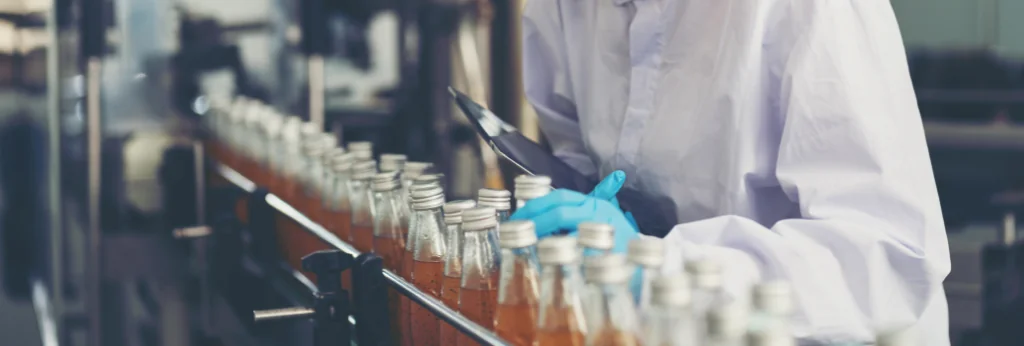Is your ingredient distributor following stringent quality control measures to ensure the safety and quality of your product? In this blog, we explain six ways ingredients should be tested in quality control processes, highlighting the importance of thorough testing and the value of working with a reputable distributor.
The integrity of your product relies heavily on the quality of the ingredients you formulate it with. To ensure ingredients meet safety standards and perform as intended, there are a number of rigorous quality control (QC) standards that ingredient partners should be adhering to.
A transparent quality control process is a sign of a trusted ingredient distributor, giving you confidence in your partnership and your final product. Here are five things they should be doing.
#1 –Ingredient Manufacturer Qualification
Ensuring the reliability of ingredients starts with a rigorous ingredient manufacturer qualification process. This involves conducting detailed evaluations of potential partners to confirm they meet stringent standards for quality, safety, and regulatory compliance.
By working with trusted and thoroughly vetted suppliers, companies can secure a supply chain that prioritizes consistency and excellence. This approach minimizes risks, supports product integrity, and ensures that the materials sourced meet or exceed expectations at every level.
#2 – Product Qualification
Product qualification ensures that each new material introduced to a portfolio meets stringent standards for quality, performance, and regulatory compliance. This process focuses on evaluating the material’s suitability for its intended applications, including its chemical composition, physical properties, and alignment with applicable industry standards. The goal is to confirm that the material consistently delivers the expected results under real-world conditions.
By carefully qualifying materials before use, manufacturers reduce the risk of unexpected issues during production. This proactive approach ensures that only thoroughly vetted materials are approved, giving manufacturers confidence in their supply chain and the reliability of their finished products.
#3 – Material Inspection
Raw material inspection involves visually inspecting materials for defects, assessing packaging integrity, and conducting preliminary tests to verify specifications.
A trustworthy distributor provides pre-inspected materials to manufacturers, ensuring that any discrepancies have been addressed before delivery. By implementing thorough raw material inspection protocols, distributors can catch issues early and prevent compromised ingredients from entering the production line.
#4 – Sample Testing
Sample testing is one of the most important steps in the quality control process. It includes a variety of assessments that verify that ingredients not only meet specific industry regulations but also align with consumer safety expectations. Every industry has different sample tests they perform on certain ingredients, but some common tests are:
- Chemical analysis: Testing for harmful substances and verifying ingredient composition to ensure safety.
- Microbiological testing: Detecting harmful microorganisms that could compromise product safety.
- Physical property evaluations: Assessing factors such as texture, viscosity, and density to ensure ingredients perform as intended.
A reputable distributor ensures ingredients meet these compliance standards before they reach manufacturers. This proactive approach identifies any potential issues that could lead to regulatory violations, such as contaminants or improper labeling. The distributor should also provide any additional compliance documentation to the manufacturer, which serves as evidence that the ingredients have been rigorously evaluated and are safe for use.
#5 – Documentation & Transparency
A reliable distributor will provide extensive documentation, helping manufacturers to trace the origin of each ingredient and confirm its compliance. By maintaining detailed records of ingredient sourcing, testing outcomes, and compliance certifications, manufacturers can verify the quality of ingredients and ensure they meet safety and regulatory standards.
#6 – Traceability
Traceability plays a critical role in maintaining consistency and quality across the lifecycle of an ingredient. By having the ability and oversight to track each product from its initial sourcing to its final delivery, manufacturers can ensure full visibility at every stage of the process. This approach helps identify and resolve any quality issues promptly while providing assurance that the ingredients meet established standards.
A robust traceability system allows for accountability across the supply chain and ensures that any deviations from expected quality can be traced back to their source. This level of oversight not only upholds product integrity but also builds trust by demonstrating a commitment to transparency and safety.
Conclusion
Rigorously testing ingredients through various quality control processes is essential for delivering safe, effective, and appealing products to consumers. When you partner with a reliable ingredient distributor, you can trust their strict quality control measures to ensure consistently high-quality ingredients.
Need to source safe and effective ingredients for your products? Partner with ChemQuest today.
